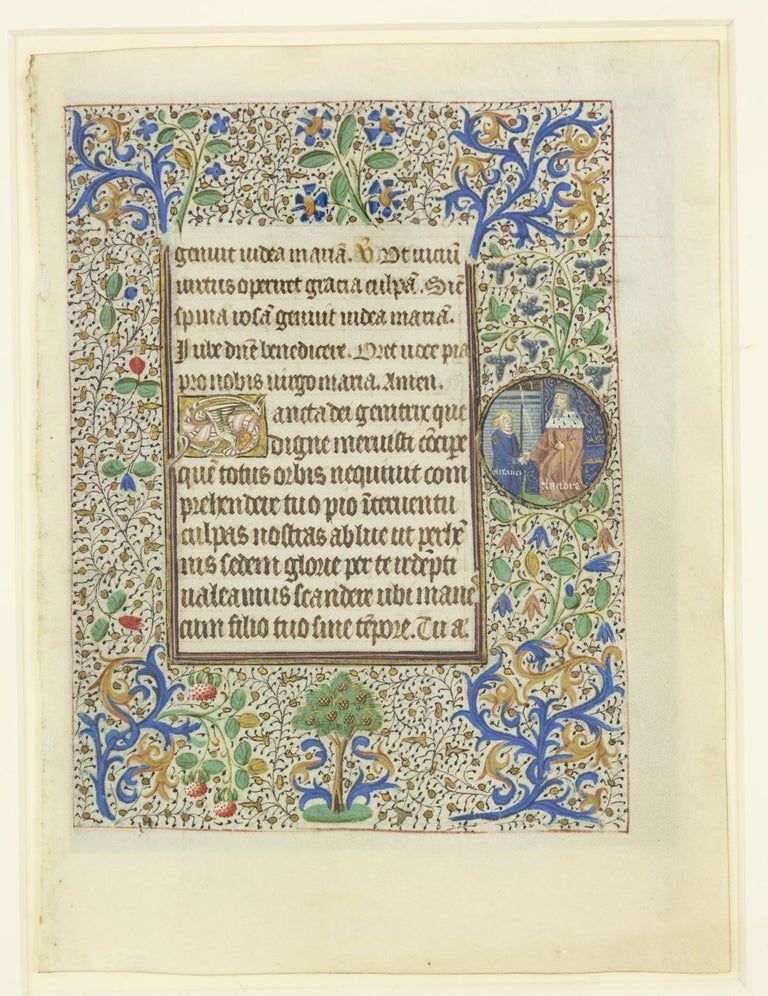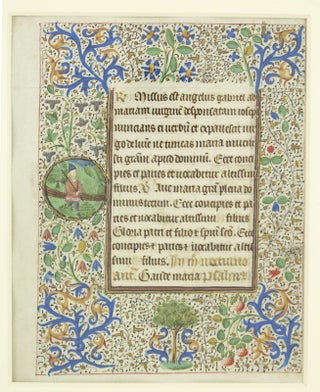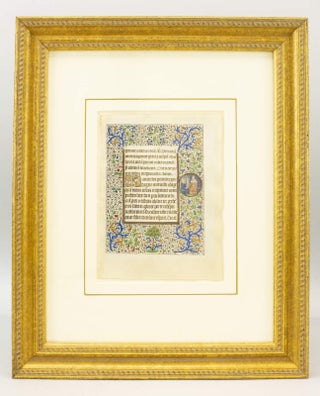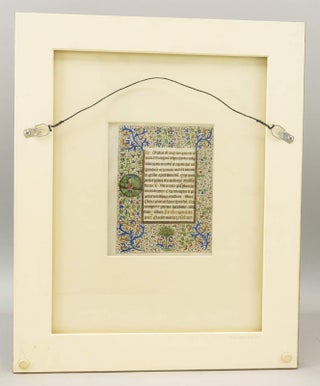TEXT FROM MATINS.
(Paris: ca. 1460). Leaf: 195 x 144 mm. (7 3/4 x 5 5/8"); frame: 420 x 345 mm. (16 1/2 x 13 1/2"). Single column, 13 lines in a fine gothic book hand.
With gold frame and cream matting, both sides with glass. Rubrics in burnished gold, one inhabited initial with the image of a winged beast painted pink and white on a gold ground, a gold and pink bar surrounding the text on three sides, EACH SIDE WITH EXTRAVAGANTLY DECORATIVE FULL BORDERS of acanthus leaves, flowers, vegetation, vinestem work, and gold bezants, INCORPORATING TWO ROUNDEL MINIATURES DEPICTING THE LIFE OF ST. ALEXIUS. ◆Two of the faces in the roundels a little chipped, remains of mounting tape just visible on inner edge, otherwise A FINE LEAF, extremely clean, with sparkling gold.
The extraordinarily lavish and animated full borders, coupled here with extensive use of brushed and burnished gold, suggest that this leaf comes from a Book of Hours that was commissioned for a person or persons of high rank, since it would have been very costly. It comes from a manuscript that included numerous roundels depicting the lives of St. Catherine and the more obscure St. Alexius, and it is possible that this Book of Hours belonged to a husband and wife for whom these saints served as patrons. The story depicted in the two roundels--one showing a king and a kneeling man with a spear, the other showing a spear-wielding man (the same?) walking along a path--is a little difficult to follow, especially as we have only one leaf to go on. According to legend, St. Alexius fled a life of privilege in order to live an ascetic existence. After 17 years spent living in extreme poverty in Edessa, he returned to his father's home in Rome where he lived for a further 17 years in the guise of a beggar; his true identity was only revealed after his death. Although each figure in the roundels here is identified with white lettering, we have struggled to make out what these names might be. Given that the text comes from Matins (the first hour in the Hours of the Virgin), and assuming that it is indeed the story of St. Alexius being depicted, the scene must come early in the saint's life--probably the moment in which he leaves his home to pursue his true calling. The style of the delicately painted figures suggests that our artist may have been familiar with the early output of the Coëtivy Master, who, according to Avril and Renaud, was "the most important artist practising in Paris in the third quarter of the century, from about 1450 to 1485." For more on the Coëtivy Master, see Avril and Reynaud, pp. 58-69. (ST14277)
Price: $5,500.00




